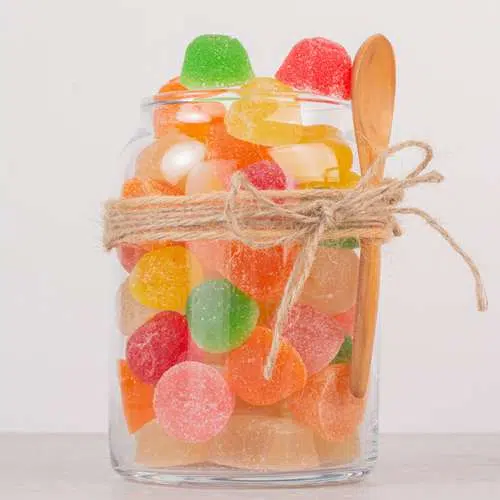Chinese fruit jellies offer a delightful fusion of flavors and textures, making them a popular treat among locals and international food enthusiasts alike. Chinese people, as well as people from other East Asian nations, can’t get enough of fruit-shaped jelly candy. The feeling of ripping off the sealing foil and sucking the entire jelly into your mouth is simply delectable. From traditional favorites to modern twists, these fruit jellies showcase the diversity of Chinese culinary creativity. In this blog, we’ll take a delicious journey through various types of Chinese fruit jellies that you absolutely must try.
A brief overview of the popularity of Chinese fruit jellies
Chinese fruit jellies from fruit jelly manufacturer have gained immense popularity both domestically and internationally due to their unique flavors, textures, and cultural significance. Rooted in centuries-old traditions, these delectable jellies have evolved, showcasing the Chiina’s culinary heritage.
Chinese fruit jellies lie in their diverse and flavorful profiles. The different assorted flavors, such as strawberry, mango, green apple, pineapple, and coconut, make them a healthy and yummy chocolate. This variety ensures that there is a fruit jelly for every palate, contributing to their widespread acceptance.
As made from natural fruit extracts, these jellies are a win-win situation for health-conscious consumers. Made from natural fruit extracts, these jellies often contain fewer artificial additives compared to other sweets, aligning with modern healthy dietary preferences.
The cultural significance of fruit jellies in Chinese cuisine
Chinese fruit jellies have deep roots in the country’s culinary traditions, which are often associated with festivals, celebrations, and auspicious occasions. Their preparation and consumption are steeped in cultural symbolism, making them an integral part of Chinese culinary heritage.
Chinese fruit jellies are made of fresh fruits, which symbolize life and new beginnings. Sugared fruits symbolize wishing for a sweet year, while limes, bananas, pineapple, and water are for temple offerings. Hence, eating fruit jellies made of fresh fruits adds a layer of appeal, making them suitable for various celebratory occasions.
The global influence of fruit jelly
Fruit jellies are preserved fruit juice and sugar. Jellies are widely consumed combinations of fruit juice and sugar that have a gelatinous consistency, known as infused fruit jellies. Manufacturers are constantly working on various flavors to meet consumer demand in the market.
Manufacturers of Instant Cup Noodles, potato chips, fruit jellies, and other snack items have begun to develop healthier versions of such items to cater needs of varied customers. For instance, fruit jelly manufacturer produces spreads that have fruit in them, which are comparatively more practical and a healthier alternative to fruit jelly.
The need for varied culinary flavors in fruit jellies and other packed items like chips is rising. Consumers are becoming interested in exotic and ethnic flavors as well as sugar-free, non-GMO, and organic confectioneries.
As international palates seek new and exciting gastronomic adventures, the unique flavors offered by fruit jellies have found resonance, allowing them to transcend cultural and geographical limitations.
What are the different types of fruit jellies that you must try?
The most popular types of Chinese fruit jelly are as follows:
- Hawthorn Jelly:
Hawthorns are one of the last fruits hanging on the tree late into the fall. It is also known as “Shanzha Gao”. Hawthorns are known by various names in China, and they have cultural significance and culinary uses. Particularly talking about Hawthorn jelly, taste similar to rosehip jelly, but with the added benefit of being a potent medicine for heart health.
Flavor Profile: Tangy and sweet, with a hint of tartness.
Key Ingredients: Hawthorn fruit extract, sugar, and agar-agar.
- Osmanthus Jelly:
Osmanthus jelly, or “Guihua Gao,” is a delicacy known for its aromatic essence. When we dry osmanthus flowers in hot water and add the tea mixture to a mixture of hot water, gelatin, and sugar, we get osmanthus jelly. The jelly is infused with the fragrance of osmanthus flowers, creating a sensory experience that delights both the palate and the nose.
Flavor Profile: Floral, with a subtle sweetness.
Key Ingredients: Osmanthus flowers, rock sugar, and agar-agar.
- Lychee Jelly:
Lychee jelly is a jiggly jelly made of sugar, a thickening agent such as nata de coco pulp, and lychee fruit, juice, or artificial flavoring. However, commercial lychee jelly may or may not include pieces of lychee fruit and may also contain ingredients like preservatives, stabilizers, and coloring agents. Also known as “Lizhi Gao,” it’s a favorite during the hot summer months for its cooling and hydrating properties.
Flavor Profile: Sweet and refreshing, with a tropical lychee taste.
Key Ingredients: Lychee juice, sugar, gelatin, cocoa pulp, or artificial flavors
- Mango Passion Fruit Jelly:
Mango and passion fruit are a match made in heaven. It’s the perfect combination of sweet, tart, and refreshing. When this taste is imitated in traditional fruit jellies, it gives the lusciousness of mango with the zesty kick of passion fruit. The vibrant colors and bold flavors of jelly make it a visually appealing and tasty treat.
Flavor Profile: Tropical, with a perfect balance of sweet and tangy.
Key Ingredients: mango puree, passion fruit juice, sugar, and agar-agar.
- Dragon Fruit Jelly:
Dragon fruit jelly, or “Huolongguo Gao,” is known for its vibrant, leathery skin and its spikes. The whole jelly has a visually stunning appearance. The jelly showcases the vibrant colors of dragon fruit and is often served in creative shapes, adding an artistic element to its enjoyment.
Flavor Profile: Mildly sweet, with a visually striking appearance.
Key Ingredients: Dragon fruit puree, sugar, and gelatin
Conclusion
In conclusion, Chinese fruit jellies are a testament to the rich culinary heritage of China, offering a diverse array of flavors deeply rooted in tradition. From the tangy hawthorn jelly to the aromatic osmanthus jelly, each variety tells a unique story. With global influence and a fusion of taste and culture, Chinese fruit jellies are a delightful treat for the senses.
JOJOSE FOODS is a leading fruit jelly manufacturer in China manufacturing its products in more than 100+ countries. With 20+ years of experience, JOJOSE FOODS has secured its name as a topmost manufacturer with food safety certification, an excellent R&D team, stable quality, the best raw material supply, and after-sale support. Trust JOJOSE FOODS and order your first sample now!




